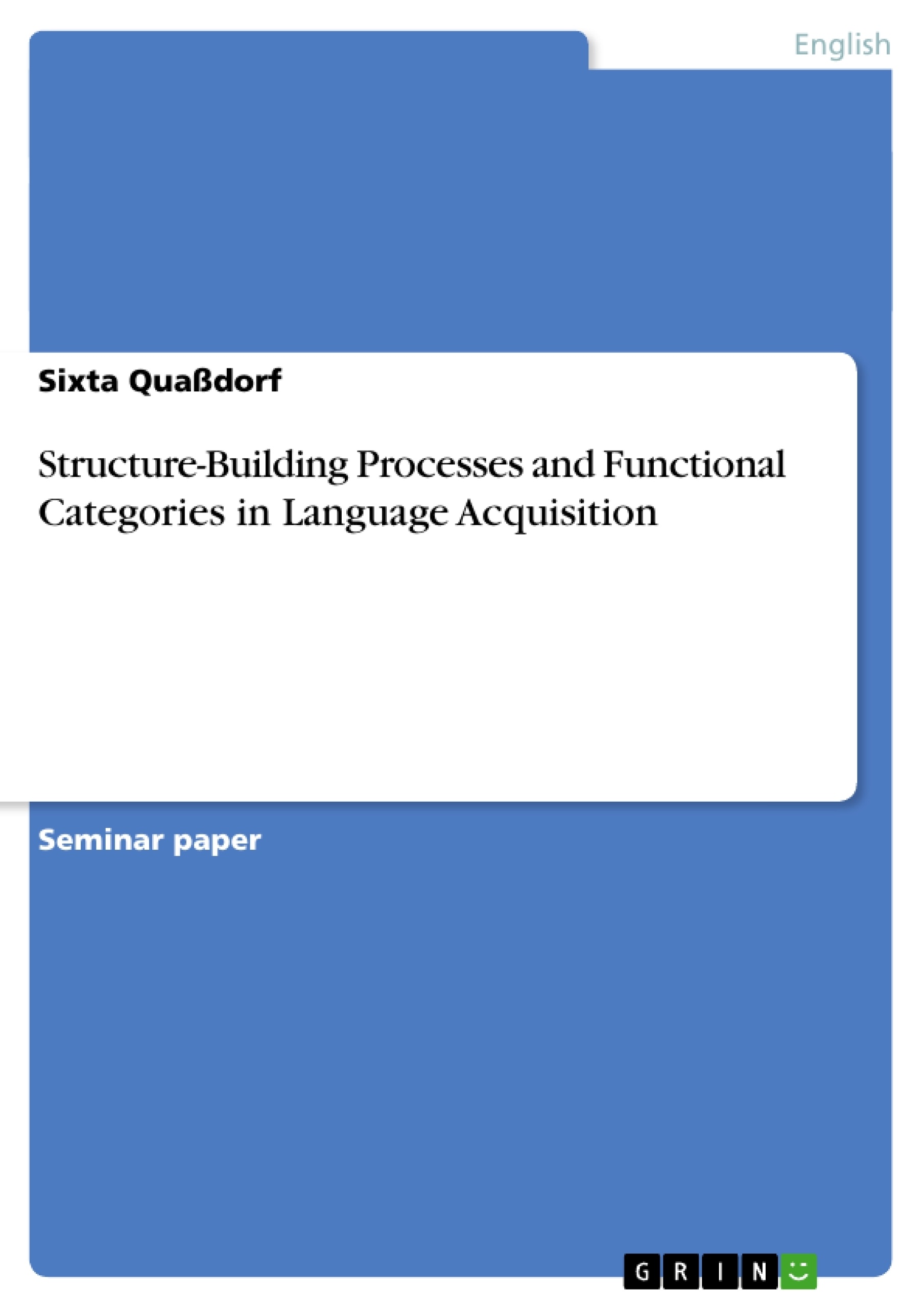Language acquisition seems to be subject to a paradox like probably all matters connected with the human language: every-one acquires his or her first language with relative ease in a few years – it is a matter of course (except if disabilities or social deprivations obstruct this natural process) - but even the most learned scholars cannot offer a satisfactory and all-encompassing explanation about how this process works. A number of different approaches exists which can be subsumed under the headings "behaviourist", "interactionist", "nativist", "cognitivist" or the like1, and each of these major currents bifurcates into sub-theories which often enough seem to be incompatible with each other again.
In this essay I am going to present and discuss two hypotheses of language acquisition which follow the generative approach, i.e. which presuppose the existence of an innate language acquisition device (LAD) helping us solve the task of acquiring the complicated linguistic system by providing a "ready-made" underlying fundamental structure, the Universal Grammar (UG). Accordingly Andrew Radford, and Harald Clahsen et al. assume that the rules of UG are with the child from the very beginning, yet that the final build-up of the internal grammatical structure is triggered by lexical learning processes. Radford identifies three major stages of developmental phases with children acquiring English syntax, whereas Clahsen et al., studying children acquiring German, find plausible explanations for the developmental process by a notion of underspecified functional categories.
1 cf. Crystal p. 234 f., Clahsen p. xv
Inhaltsverzeichnis (Table of Contents)
- Introduction
- Radford's Minimal Projection Hypothesis
- Stage One
- Null Subjects
- Negations and Questions in Stage One
- Stage Two
- Stage Three
- Final Remarks on Radford's SCH
- Stage One
- The Lexical Learning Hypothesis by Harald Clahsen et al.
- Underspecificity and Verb Placement
- Lexical Learning and Syntax
- Subject-Verb Agreement
- Determiner Phrase and Case Marking
- Final Remarks on Clahsen et al.'s LLH
- Critical Points and Possible Way Out
Zielsetzung und Themenschwerpunkte (Objectives and Key Themes)
This essay aims to present and discuss two hypotheses of language acquisition which follow the generative approach, namely Radford's Minimal Projection Hypothesis and Clahsen et al.'s Lexical Learning Hypothesis. Both hypotheses presuppose the existence of an innate language acquisition device (LAD) that helps children acquire language by providing a fundamental structure, Universal Grammar (UG).
- The role of Universal Grammar (UG) in language acquisition
- The development of syntactic structures in children
- The acquisition of functional categories in language
- The influence of lexical learning on syntactic development
- The Minimal Projection Hypothesis and its application to English syntax acquisition
Zusammenfassung der Kapitel (Chapter Summaries)
The essay begins by introducing the paradox of language acquisition: the ease with which children acquire their first language contrasts with the difficulty of explaining this process. It then outlines two generative hypotheses: Radford's Minimal Projection Hypothesis and Clahsen et al.'s Lexical Learning Hypothesis. Both hypotheses suggest that UG provides the foundation for language acquisition, with development driven by lexical learning.
Chapter 2 explores Radford's Minimal Projection Hypothesis, which posits that syntactic structures are projections of the lexical items they contain. This hypothesis suggests that children learn content words first, followed by grammatical words. Radford identifies three stages of syntactic development, with the initial stage characterized by the lack of functional categories and the projection of only a VP. This chapter also delves into the nature of null subjects in early child language, proposing that they are instances of null constants (nc) rather than pro or PRO.
Chapter 3 focuses on Clahsen et al.'s Lexical Learning Hypothesis, which posits that underspecified functional categories are crucial for explaining the acquisition of German syntax. This chapter explores how lexical learning influences the development of subject-verb agreement and determiner phrase and case marking. It also examines the role of underspecificity in explaining the evolution of functional categories in child language.
Schlüsselwörter (Keywords)
The main keywords of this essay include Universal Grammar, language acquisition, generative approach, Minimal Projection Hypothesis, Lexical Learning Hypothesis, functional categories, lexical learning, null subjects, underspecificity, and syntactic development. These terms represent the core concepts and research focus of the work, exploring how children acquire language through a combination of innate linguistic knowledge and learning processes.
- Quote paper
- Sixta Quaßdorf (Author), 2003, Structure-Building Processes and Functional Categories in Language Acquisition, Munich, GRIN Verlag, https://www.grin.com/document/17506



